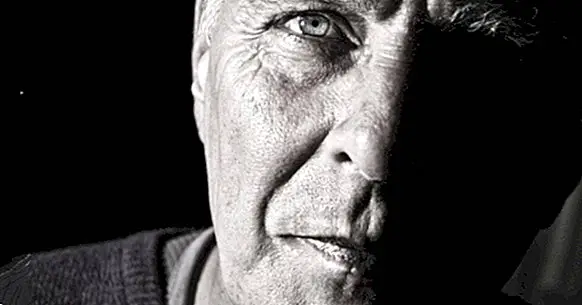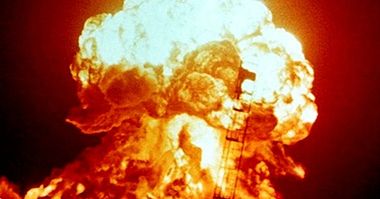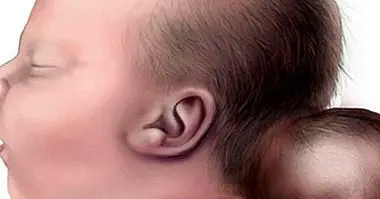The different types of amnesia (and its characteristics)
The amnesia it is a disorder that affects the normal functioning of memory and makes the sufferer unable to store information or recover it correctly.
However, beyond this brief definition there are many nuances that make us speak, more than amnesia as a global concept, of types of amnesia.
Amnesia can take different forms
Amnesia can occur in so many ways that studies of certain injuries and dysfunctions In different parts of the brain it has been discovered the mechanisms that operate behind the use of memory from the different types of amnesia that are presented.
In addition, this phenomenon may be caused by injuries or by the "emotional footprint" that have left in the brain certain experiences, causing some memories to be blocked. This means that the types of amnesia can also be established according to the different causes that produce them. In this way we have seen that, what seems to be a simple cognitive function based simply on the storage of information is, in reality, the result of several processes that work at the same time.
In this article we will show the different types of amnesia, their characteristics and criteria by which they can be classified into different categories .
1. Types of amnesia according to their chronology
If we look at the criteria of the chronology in which amnesia is manifested, we will distinguish between two types of amnesia: the retrograde and the antegrade . This classification only serves to describe the symptoms of amnesia, and does not give information about what causes it. In addition, both types of amnesia can be produced at the same time, although many times one is more noticeable than the other.
1.1. Retrograde amnesia
In retrograde amnesia the experiences that are not remembered happened before starting to develop this disorder . It is the most well-known type of amnesia and is expressed in series, films and other works of fiction in which a character does not remember a part of his past.
1.2. Antegrade amnesia
In this type of amnesia There is a total or partial inability to make the experiences that are lived remain fixed in the memory . That is to say, that the anterograde amnesia, by affecting what is happening since the disorder first developed, means that what is being lived does not become part of the long-term memory and is forgotten after a few minutes or seconds.
An example of this type of amnesia can be seen in the famous film Memento.
2. Types of amnesia according to their causes
2.1. Global Amnesia
This type of amnesia consists of the total loss of memory , although usually the most important memories related to one's identity will be kept. Among its most probable causes is the possibility that a traumatic event has altered the normal functioning of the brain.
2.2. Amnesia of childhood
Consists in the inability to remember events experienced in childhood . Despite its name, this type of amnesia is not considered a disorder, as it is common and is part of the normal development of the nervous system as it grows.
2.3. Drug-induced amnesia
Type of amnesia produced by the administration of substances that affect the functioning of the brain causing that the events that happen at that moment are not remembered. It can be a side effect of a drug or it can be the purpose with which a substance has been supplied for therapeutic purposes during, for example, surgery.
2.4. Transient global amnesia
It is not known what produces this type of amnesia, only its symptoms. The person who experiences transient global amnesia will remember the essential aspects about their identity and will also be able to remember things about the immediate past, but will have difficulty accessing memories about what happened just minutes ago (anterograde amnesia) and possibly also when remembering some things belonging to long-term memory. This will happen for 24 hours or less.
2.5. Dissociative amnesia
In dissociative amnesia one is unable to evoke memories related to highly stressful or traumatic experiences. One of the types of amnesia that generate more interest.
2.6. Amnesia font
In this type of amnesia there are certain data or pieces of information that are remembered more or less well , although you are not able to know what your source is, how you have come to know about them.
2.7. Lacunar amnesia
The inability to remember what happened during a given period in which there was no significant stress peak . It is called in this way because it leaves a blank "gap" in the memory.
2.8. Posttraumatic amnesia
Posttraumatic or traumatic amnesia is a type of amnesia produced by a blow to the head or a traumatic brain injury in general . It is used to be transient and to affect the memories of the immediate past. Do not confuse posttraumatic amnesia with the forms of amnesia that appear as a result of traumatic experiences.
2.9. Dissociative leak
This type of amnesia, very common in cases of dementia, the person can realize that he is in a place without remembering how he got there . In the dissociative escape, in addition, it is very common that aspects of one's identity are not remembered, causing the person to undertake a more or less long journey to remember who he is.
2.10. Wernicke-Korsakoff syndrome
Although it is not a type of amnesia per se, Wernicke-Korsakoff syndrome is a set of symptoms in which memory disorders play a very important role. Among its most common symptoms is or a combination of retrograde and antegrade amnesia and confabulation , that is, the involuntary invention of stories that serve to "fill in" the memory gaps. It is usually caused by alcoholism.



















